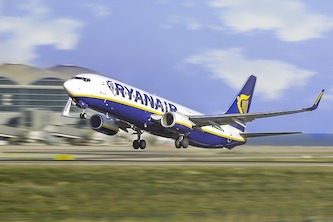The city of Bengaluru, also known as India’s Silicon Valley, recently made headlines when protesters tore down English billboards and demanded that they be written in the local language, Kannada. The protest was led by the Karnataka Rakshana Vedike (KRV), who wanted the government to implement a law requiring 60% of each display sign in the city to be in Kannada. While some political parties supported the demand for Kannada signages, they condemned the violence. This incident highlights the common assertion of linguistic identities in India, a country with over 300 languages.
The KRV has been claiming for decades that Kannada and its speakers have been marginalized in Bengaluru, a cosmopolitan city where people from all over the country and the world work and live. The influx of migrants has led some locals to fear that they will become a minority in the city. The demand for “Kannada first” stems from a linguistic nationalism that has been developing for years. In the 1920s, Kannada speakers first demanded a separate state, and initially, they were accommodating of other languages, including English.
However, in the 1980s, the protests became more strident, and Kannada nationalists targeted other Indian languages such as Sanskrit, Tamil, Urdu, and Hindi. They demanded that Kannada be made the sole first language in schools, protested against Tamil Nadu over water sharing, and opposed the use of Urdu on state broadcaster Doordarshan. In 2017, Kannada nationalists took on Hindi, demanding its removal from signages and public announcements on the Bengaluru Metro line.
The demand for Kannada signages gained momentum with the IT boom in the 1990s, as there was anxiety among Kannadigas that English-speaking workers from other states were taking away their jobs. The KRV started demanding quotas or affirmative action for “sons of the soil” to protect local job opportunities. They argue that regional autonomy is rooted in India’s federalism, and English signages hinder that. However, they clarify that they are not against multinational companies where English is crucial for work.
While some sections of Kannada speakers fervently support the KRV’s demands, the recent protests and change in signages are unlikely to affect Bengaluru’s global image, according to the Federation of Karnataka Chamber of Commerce and Industry (FKCCI). The diligent workforce of Bengaluru, which built the city’s brand, will continue to do good work regardless of the language on the signages. The FKCCI has requested commercial establishments to follow the law and prominently use Kannada in their signages. The deadline for changing the signages is 28 February.
In conclusion, the recent protests in Bengaluru demanding Kannada signages reflect the assertion of linguistic identities in India. Kannada nationalists have been advocating for the promotion of Kannada language and culture for decades, and their demands have become more strident over time. While the protests have sparked debate, they are
Original news source: Bengaluru: Why English is dividing people in India’s Silicon Valley (BBC)
🎧 Listen:
Slow
Normal
Fast
📖 Vocabulary:
| 1 | cosmopolitan | Having an international flavor with a variety of people from different parts of the world |
| 2 | marginalized | Made to feel less important or pushed to the side of society |
| 3 | influx | The arrival or entry of many people or things in large numbers |
| 4 | strident | Loud, forceful, and sometimes harsh in expressing opinions |
| 5 | nationalism | A political ideology that emphasizes the interests and culture of a particular nation |
| 6 | autonomy | The right or condition of self-government |
| 7 | quotas | Fixed shares of something that are reserved for certain groups |
| 8 | affirmative | In favor of or supporting a policy of taking positive steps to achieve a particular goal |
| 9 | multinational | Operating in several countries |
| 10 | fervently | With great intensity or passion |
| 11 | signages | Displays or boards for showing information or advertisements |
| 12 | assertion | The act of stating something strongly and firmly |
| 13 | advocating | Supporting or arguing in favor of something |
| 14 | sparked | Caused to begin or ignited |
| 15 | diligent | Showing care and conscientiousness in one’s work or duties |
Group or Classroom Activities
Warm-up Activities:
– News Summary
Instructions: Divide the class into pairs or small groups. Give each group a few minutes to read the article silently. Then, they should work together to summarize the main points of the article in their own words. Afterward, each group can share their summary with the class.
– Opinion Poll
Instructions: Prepare a list of statements related to the article, such as “English should be the primary language on billboards in Bengaluru” or “Local languages should be prioritized over English in cosmopolitan cities.” Have the students stand on opposite sides of the room to represent their opinion on each statement. Then, read out each statement one by one and have the students move to the side of the room that represents their opinion. Allow a few students from each side to explain their reasoning.
– Vocabulary Pictionary
Instructions: Write down key vocabulary words from the article on small slips of paper and place them in a hat or bag. Divide the class into two teams. One student from each team will take turns drawing a slip of paper and attempting to draw the word without using any letters or numbers. Their team must guess the word within a certain time limit. The team with the most correct guesses at the end wins.
– Speed Summarizing
Instructions: Divide the class into pairs. Give each pair a few minutes to read the article silently. Then, each student should take turns summarizing the article to their partner in one minute or less. Afterward, they can switch roles and summarize the article again, trying to include any important details their partner may have missed.
– Future Predictions
Instructions: In pairs or small groups, have the students discuss and make predictions about the future of language use in Bengaluru. They should consider factors such as globalization, technological advancements, and cultural shifts. Each group can share their predictions with the class and discuss the reasons behind their choices.
🤔 Comprehension Questions:
1. Why did protesters in Bengaluru tear down English billboards?
2. What is the Karnataka Rakshana Vedike (KRV) demanding in terms of display signs in the city?
3. How have locals in Bengaluru expressed their fear of becoming a minority in the city?
4. How has the demand for “Kannada first” evolved over time?
5. Why did the demand for Kannada signages gain momentum in the 1990s?
6. What is the argument made by the KRV regarding regional autonomy and English signages?
7. According to the Federation of Karnataka Chamber of Commerce and Industry (FKCCI), how will the recent protests and change in signages affect Bengaluru’s global image?
8. What is the deadline for changing the signages in Bengaluru?
Go to answers ⇩
🎧✍️ Listen and Fill in the Gaps:
The city of Bengaluru, also known as (1)______’s (2)______ Valley, recently made headlines when protesters tore down English billboards and demanded that they be written in the local language, Kannada. The protest was led by the Karnataka Rakshana Vedike (KRV), who wanted the government to implement a law (3)______ 60% of each display sign in the city to be in Kannada. While some political parties supported the demand for Kannada signages, they condemned the violence. This incident highlights the common assertion of linguistic identities in India, a country with over 300 (4)______.
The KRV has been claiming for decades that Kannada and its speakers have been marginalized in Bengaluru, a cosmopolitan city where people from all over the country and the world work and live. The influx of migrants has led some locals to fear that they will become a minority in the city. The demand for “Kannada first” stems from a linguistic nationalism that has been developing for years. In the 1920s, Kannada speakers first demanded a separate state, and initially, they were (5)______ of other languages, including (6)______.
However, in the 1980s, the (7)______ became more strident, and Kannada nationalists targeted other (8)______ languages such as Sanskrit, Tamil, Urdu, and Hindi. They demanded that Kannada be made the sole first language in schools, protested against Tamil Nadu over water sharing, and opposed the use of Urdu on state broadcaster Doordarshan. In 2017, Kannada nationalists took on Hindi, demanding its (9)______ from signages and public announcements on the (10)______ Metro line.
The demand for Kannada signages gained momentum with the IT boom in the 1990s, as there was anxiety among Kannadigas that English-speaking workers from other states were taking away their jobs. The KRV started demanding quotas or affirmative action for “sons of the soil” to protect local job opportunities. They argue that regional autonomy is rooted in India’s federalism, and English signages hinder that. However, they (11)______ that they are not against (12)______ companies where English is crucial for work.
While some sections of Kannada speakers fervently support the KRV’s demands, the recent protests and change in signages are unlikely to affect Bengaluru’s global image, according to the Federation of Karnataka Chamber of Commerce and Industry (FKCCI). The diligent workforce of Bengaluru, which built the city’s brand, will continue to do good work regardless of the (13)______ on the (14)______. The FKCCI has requested commercial establishments to follow the law and prominently use (15)______ in their signages. The deadline for changing the signages is 28 February.
In conclusion, the recent protests in Bengaluru demanding Kannada signages reflect the assertion of linguistic identities in India. Kannada nationalists have been (16)______ for the promotion of Kannada language and culture for decades, and their demands have become more strident over time. While the protests have sparked debate, they are
Go to answers ⇩
💬 Discussion Questions:
Students can ask a partner these questions, or discuss them as a group.
1. What is the significance of linguistic identities in a multicultural country like India?
2. How do you think the demand for “Kannada first” signages affects the cosmopolitan nature of Bengaluru?
3. Do you think it is fair for Kannada speakers to feel marginalized in a city like Bengaluru? Why or why not?
4. How would you feel if your native language was being overshadowed by other languages in your city?
5. Do you think it is important for a city to prioritize the use of its local language in signages and public announcements? Why or why not?
6. How do you think the demand for Kannada signages affects the job opportunities for English-speaking workers in Bengaluru?
7. What is the role of regional autonomy in a country’s federalism?
8. How do you think the protests and change in signages will impact Bengaluru’s global image?
9. Do you believe that the diligent workforce of Bengaluru will continue to excel regardless of the language on the signages? Why or why not?
10. How do you think the promotion of regional languages and cultures can coexist with the use of English in multinational companies?
11. Do you think it is necessary for commercial establishments to prominently use Kannada in their signages? Why or why not?
12. How do you think the demand for Kannada signages reflects the changing dynamics of Bengaluru as a city?
13. What are some potential solutions to address the concerns of Kannada speakers without marginalizing other languages?
14. How do you think the protests for Kannada signages compare to similar movements in other countries?
15. Do you believe that linguistic nationalism is a positive or negative force in society? Why or why not?
Individual Activities
📖💭 Vocabulary Meanings:
Match each word to its meaning.
Words:
1. cosmopolitan
2. marginalized
3. influx
4. strident
5. nationalism
6. autonomy
7. quotas
8. affirmative
9. multinational
10. fervently
11. signages
12. assertion
13. advocating
14. sparked
15. diligent
Meanings:
(A) The act of stating something strongly and firmly
(B) With great intensity or passion
(C) The right or condition of self-government
(D) Made to feel less important or pushed to the side of society
(E) Loud, forceful, and sometimes harsh in expressing opinions
(F) A political ideology that emphasizes the interests and culture of a particular nation
(G) Supporting or arguing in favor of something
(H) Having an international flavor with a variety of people from different parts of the world
(I) Showing care and conscientiousness in one’s work or duties
(J) Fixed shares of something that are reserved for certain groups
(K) In favor of or supporting a policy of taking positive steps to achieve a particular goal
(L) The arrival or entry of many people or things in large numbers
(M) Displays or boards for showing information or advertisements
(N) Operating in several countries
(O) Caused to begin or ignited
Go to answers ⇩
🔡 Multiple Choice Questions:
1. What is the nickname for the city of Bengaluru?
(a) The Language Hub
(b) India’s Silicon Valley
(c) The Cultural Capital
(d) The IT Industry Hub
2. Who led the recent protest in Bengaluru for Kannada signs?
(a) Karnataka Rakshana Vedike (KRV)
(b) Federation of Karnataka Chamber of Commerce and Industry (FKCCI)
(c) Kannada nationalists
(d) Political parties
3. How many languages are spoken in India?
(a) Over 100
(b) Over 500
(c) Over 200
(d) Over 300
4. What is the main reason behind the demand for “Kannada first” in Bengaluru?
(a) Fear of becoming a minority
(b) Protection of job opportunities
(c) Pride in the language
(d) Promotion of regional independence
5. Which languages have Kannada nationalists targeted in their protests?
(a) English, Sanskrit, Tamil, and Urdu
(b) Sanskrit, Tamil, Urdu, and Hindi
(c) Tamil, Urdu, Hindi, and English
(d) Hindi, English, Sanskrit, and Tamil
6. Why did the demand for Kannada signs increase in the 1990s?
(a) Growth of the IT industry
(b) Increase in the number of multinational companies
(c) Fear of losing job opportunities to English speakers
(d) Rise in the number of people moving to Bengaluru
7. Who supports the KRV’s demands for Kannada signs?
(a) FKCCI
(b) Political parties
(c) Some Kannada speakers
(d) Multinational companies
8. What is the deadline given to businesses to make changes to their signs?
(a) March 1
(b) January 31
(c) March 15
(d) February 28
Go to answers ⇩
🕵️ True or False Questions:
1. The protest was led by the Karnataka Rakshana Vedike (KRV).
2. The demand for Kannada signages declined with the IT boom in the 1990s.
3. The city of Bengaluru is not known as India’s Silicon Valley.
4. The recent protests and change in signages are unlikely to affect Bengaluru’s global image, according to the Federation of Karnataka Chamber of Commerce and Industry (FKCCI).
5. The KRV wanted the government to implement a law requiring 60% of each display sign in the city to be in Kannada.
6. Kannada nationalists have supported other Indian languages such as Sanskrit, Tamil, Urdu, and Hindi.
7. Protesters in Bengaluru tore down English billboards and demanded that they be written in the local language, Kannada.
8. The demand for Kannada signages stems from a cultural preference that has been changing for years.
Go to answers ⇩
📝 Write a Summary:
Write a summary of this news article in two sentences.
Check your writing now with the best free AI for English writing!
Writing Questions:
Answer the following questions. Write as much as you can for each answer.
Check your answers with our free English writing assistant!
1. What was the recent protest in Bengaluru about?
2. Why have Kannada nationalists become more strident in their demands over time?
3. How has the IT boom in the 1990s affected the demand for Kannada signages?
4. According to the FKCCI, how will the recent protests and change in signages affect Bengaluru’s global image?
5. What is the deadline for commercial establishments to change their signages to prominently use Kannada?
✅ Answers
🤔✅ Comprehension Question Answers:
1. Why did protesters in Bengaluru tear down English billboards?
Protesters tore down English billboards in Bengaluru to demand that they be written in the local language, Kannada.
2. What is the Karnataka Rakshana Vedike (KRV) demanding in terms of display signs in the city?
The KRV is demanding that 60% of each display sign in Bengaluru be in Kannada.
3. How have locals in Bengaluru expressed their fear of becoming a minority in the city?
Locals in Bengaluru have expressed their fear of becoming a minority in the city due to the influx of migrants.
4. How has the demand for “Kannada first” evolved over time?
The demand for “Kannada first” has evolved over time, with protests becoming more strident and targeting other Indian languages such as Sanskrit, Tamil, Urdu, and Hindi.
5. Why did the demand for Kannada signages gain momentum in the 1990s?
The demand for Kannada signages gained momentum in the 1990s due to anxiety among Kannadigas that English-speaking workers from other states were taking away their jobs.
6. What is the argument made by the KRV regarding regional autonomy and English signages?
The KRV argues that regional autonomy is rooted in India’s federalism, and English signages hinder that.
7. According to the Federation of Karnataka Chamber of Commerce and Industry (FKCCI), how will the recent protests and change in signages affect Bengaluru’s global image?
According to the FKCCI, the recent protests and change in signages are unlikely to affect Bengaluru’s global image.
8. What is the deadline for changing the signages in Bengaluru?
The deadline for changing the signages in Bengaluru is 28 February.
Go back to questions ⇧
🎧✍️✅ Listen and Fill in the Gaps Answers:
(1) India
(2) Silicon
(3) requiring
(4) languages
(5) accommodating
(6) English
(7) protests
(8) Indian
(9) removal
(10) Bengaluru
(11) clarify
(12) multinational
(13) language
(14) signages
(15) Kannada
(16) advocating
Go back to questions ⇧
📖💭✅ Vocabulary Meanings Answers:
1. cosmopolitan
Answer: (H) Having an international flavor with a variety of people from different parts of the world
2. marginalized
Answer: (D) Made to feel less important or pushed to the side of society
3. influx
Answer: (L) The arrival or entry of many people or things in large numbers
4. strident
Answer: (E) Loud, forceful, and sometimes harsh in expressing opinions
5. nationalism
Answer: (F) A political ideology that emphasizes the interests and culture of a particular nation
6. autonomy
Answer: (C) The right or condition of self-government
7. quotas
Answer: (J) Fixed shares of something that are reserved for certain groups
8. affirmative
Answer: (K) In favor of or supporting a policy of taking positive steps to achieve a particular goal
9. multinational
Answer: (N) Operating in several countries
10. fervently
Answer: (B) With great intensity or passion
11. signages
Answer: (M) Displays or boards for showing information or advertisements
12. assertion
Answer: (A) The act of stating something strongly and firmly
13. advocating
Answer: (G) Supporting or arguing in favor of something
14. sparked
Answer: (O) Caused to begin or ignited
15. diligent
Answer: (I) Showing care and conscientiousness in one’s work or duties
Go back to questions ⇧
🔡✅ Multiple Choice Answers:
1. What is the nickname for the city of Bengaluru?
Answer: (b) India’s Silicon Valley
2. Who led the recent protest in Bengaluru for Kannada signs?
Answer: (a) Karnataka Rakshana Vedike (KRV)
3. How many languages are spoken in India?
Answer: (d) Over 300
4. What is the main reason behind the demand for “Kannada first” in Bengaluru?
Answer: (c) Pride in the language
5. Which languages have Kannada nationalists targeted in their protests?
Answer: (b) Sanskrit, Tamil, Urdu, and Hindi
6. Why did the demand for Kannada signs increase in the 1990s?
Answer: (a) Growth of the IT industry
7. Who supports the KRV’s demands for Kannada signs?
Answer: (c) Some Kannada speakers
8. What is the deadline given to businesses to make changes to their signs?
Answer: (d) February 28
Go back to questions ⇧
🕵️✅ True or False Answers:
1. The protest was led by the Karnataka Rakshana Vedike (KRV). (Answer: True)
2. The demand for Kannada signages declined with the IT boom in the 1990s. (Answer: False)
3. The city of Bengaluru is not known as India’s Silicon Valley. (Answer: False)
4. The recent protests and change in signages are unlikely to affect Bengaluru’s global image, according to the Federation of Karnataka Chamber of Commerce and Industry (FKCCI). (Answer: True)
5. The KRV wanted the government to implement a law requiring 60% of each display sign in the city to be in Kannada. (Answer: True)
6. Kannada nationalists have supported other Indian languages such as Sanskrit, Tamil, Urdu, and Hindi. (Answer: False)
7. Protesters in Bengaluru tore down English billboards and demanded that they be written in the local language, Kannada. (Answer: True)
8. The demand for Kannada signages stems from a cultural preference that has been changing for years. (Answer: False)
Go back to questions ⇧













